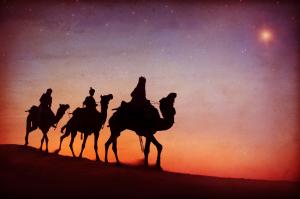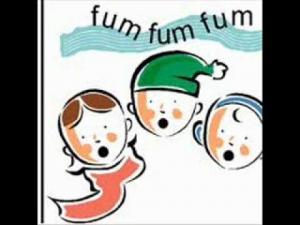
Tonight many parishes will hear the Christmas Proclamation before Mass on the Eve of Christmas. This ancient practice reminds me of an exercise I would have my Confirmation students do. I gave them a series events from the Bible and secular and Church history from the creation of the world to their own birth. The events were in random order, and they were to arrange them chronologically. It was a way of getting the students to think of their involvement in the one story which includes God’s actions and the world they learn about in history and science classes. That one story comes into clear view as the Christmas Proclamation enumerates events, both biblical and secular, leading up to the birth of Jesus.
The Christmas Proclamation was a regular part of Christmas Eve Mass until 1969, when the Novus Ordo left it out. Pope Saint John Paul II restored it as an option in its traditional place, either in the Office of Hours for Christmas Eve or before the “Midnight Mass.”
Christmas Proclamation: New and old versions
The new version of the Christmas Proclamation improves the old in a number of ways. Mostly it brings the text more in line with modern scholarship. Where the old version gives a very specific, but inaccurate, timeline, the new one provides vaguer or less specific time periods. The changes in the temporal location of Jesus’ birth are as follows:
- Was 5199 years after the creation, now “unknown ages from the time when God created …”;
- Instead of 2957 years after the Flood, now “several thousand years after the flood”;
- Was 2015 years after the birth of Abraham, now “twenty-one centuries from the time of Abraham and Sarah”;
- Instead of 1510 years after the Exodus, now “thirteen centuries after Moses led the people of Israel out of Egypt”;
- Was 1032 years after David was anointed king, now “one thousand years…”;
Other dates are the same in the two versions. Jesus was born in the 65th week of the prophecy of Daniel, the 194th Olympiad, the year 752 since the foundation of Rome, and the 42nd year of Caesar Octavian Augustus’ reign.
The new version is more inclusive of women than the old. It includes the name Sarah, Abraham’s wife, in the third item. It adds a new item: “Eleven hundred years from the time of Ruth and the Judges.”
The old version locates Jesus’ birth “in the sixth age of the world.” Augustine, following some Jewish interpretations, had divided the world into six 1000-year ages to be followed by a seventh in heaven. The new version drops this phrase.
Historical accuracy
Jimmy Akin writing in National Catholic Register analyzes the time scheme of the Christmas Proclamation. He comes up with an approximate date of 2 BC for Jesus’ birth. Using the new version, he calculates according to the prophecies of Daniel, the Olympiads, Rome, and Caesar. For example, Rome was founded in 753 BC. After 752 years the date would be 1 or 2 BC. Caesar Ocatvian August began his reign in 44 BC. His 42nd year would be about 2 BC.
Akin thinks the authors of the Proclamation were spot on with their dates, but I’ve most often heard 4 BC as the likeliest date for Jesus’ birth. The surprising thing is that the calculations don’t come out to the year 1 Anno Domini. (There is no year zero AD or BC.) The scholarly conclusion that Jesus was not born in the year 1 is much more recent than the Proclamation.
The Abraham and Exodus items make an anomaly. Abraham is dated to the 21st century BC, as tradition has it, while modern scholarship more often has him in the 19th century. On the other hand, the Proclamation dates the Exodus as modern scholarship does, in the 13th century. Traditionally it was thought to have occurred a couple hundred years earlier.
I don’t know what to think about the dating of the Flood since, as I believe, the Flood is not a historical event.
Analyzing is interesting, but Christmas Proclamation succeeds, accurate or not. It’s one of the highlights of Christmas for me.











